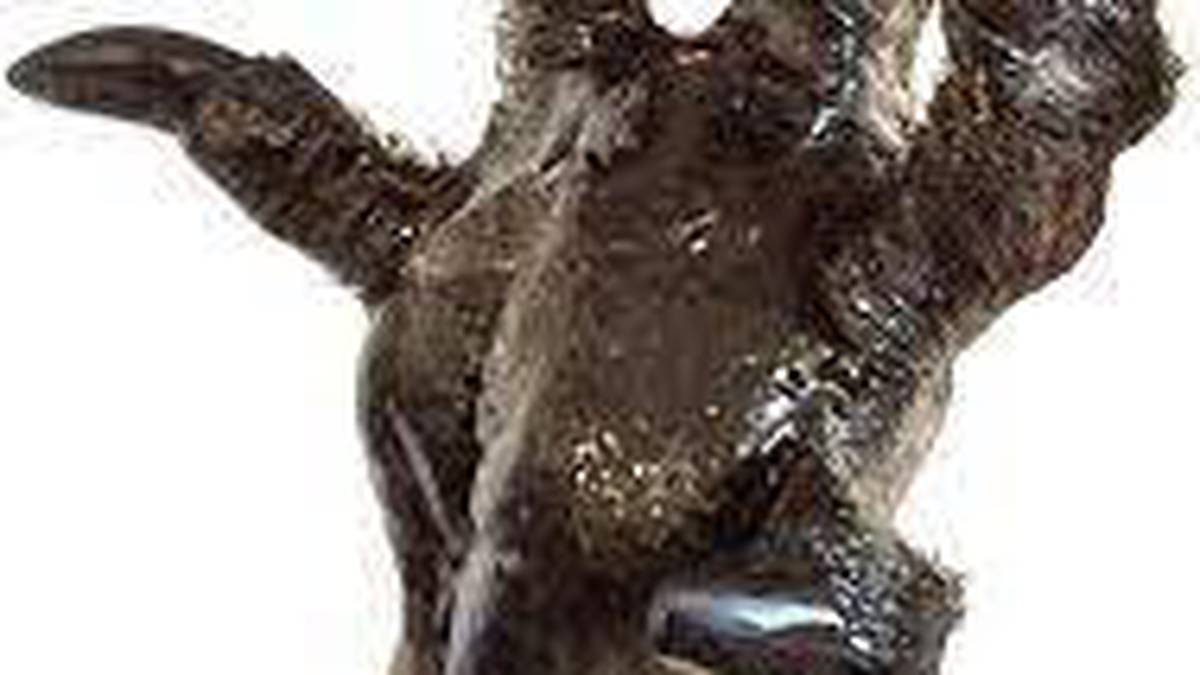A Kangaroo claw backscratcher – harvested from real kangaroos – has caused some consternation for Joe Bennett
It was a gift. From Australia. Bought at the airport, that place of time to kill and poor commercial decisions. But I am not complaining. A gift, as it may or may not say in
the Bhagavad Gita, is a love-token. And we all get too few tokens of love. Indeed, we all get too little love.
One end of the thing is a wooden handle, though that overstates it. It’s a cheap rod, a dowel, perhaps half an inch in diameter, smooth but not varnished, nor in any way formed to fit a hand. But I’ve only noticed the inadequacy of the handle now that I’ve needed to describe it. All my attention has been at the business end.
The whole thing is a little over a foot long. After about four inches the dowel disappears into a sleeve of furry skin. The fur is short and smooth and lightly mottled. You wouldn’t call it luxurious. It does not induce the urge to stroke it. But it is fur, functional, short, shiny fur.
The underside reveals that the fur is sewn tightly around the dowel with a thick thread that seems close to being sinew. There are hints of prehistory here, deliberately, I suspect.
The wooden rod within the sheath of furry skin is like a narrow and inflexible wrist, and like all wrists it ends in a hand. The hand has five digits, but no opposing thumb. The digits are shorter than yours or mine but they are of the same design, with knuckles and joints. The nails, however, have extended into claws, hardened, thickened and pointed, practical things for use in either attack or defence. You would not want to be raked by them. (Though, as it happens, that’s the purpose for which they’re being sold.)
The back of the hand is covered by the same short and mottled fur, which stretches all the way up the fingers until the claws begin.
The fingers are set apart as if they were gripping a snooker ball, so all the claw-tips are on the same plane. The fingers are rigid. If the bones are still inside the fingers they have been fused by some process, perhaps by injecting some sort of stiffener or glue. The palm is hard and black, but the grain of the skin is clearly visible. And that’s it.
What is it? Well here’s what the label says: ‘This genuine product was harvested and processed in accordance with N.P. & W.S. rules and regulations.’
/cloudfront-ap-southeast-2.images.arcpublishing.com/nzme/67567HX32B72ITVOCQPI6LW5A4.jpg)
A little research reveals that Australia has a National Parks and Wildlife Service.
Flip the label over and we have confirmation of what you may have already guessed. ‘Kangaroo paw,’ it says. ‘Back-scratcher.’
Well now, where do we start?
Let’s start with harvested. Such a pleasant word, redolent of golden crops and autumn days and teeming granaries. But of marsupial limbs? One suspects a hint of moral panic, of the need to whitewash over the only too obvious fact that this is one quarter of a kangaroo’s limbs, and that it was not surgically removed under anaesthetic.
This beast was shot and butchered, its front paws hacked off, cleaned out, cured and turned into novelty items for sale in an airport at $28 apiece (the price is written in marker pen on the label.)
It’s a fore paw. The kangaroo would have used it for feeding, grooming, leaning on when foraging, and boxing. But not for scratching a back, or at least not the owner’s back. It wouldn’t reach.
But now, freed from its associated skeleton and affixed to a stick it scratches my back very nicely. All of which brings us to the moral crux.
As a species we’ve been eating the flesh of animals and making other use of the inedible bits for as long as we’ve been around. But the paw as backscratcher feels somehow a little different. It is so obviously still a paw. It somehow rubs it in. We’ve stolen a limb and used it as, well, a limb. And for a trivial purpose.
The paw embodies an unattractive truth. That we dispose of animals at our convenience. That’s how it is and how it has always been. Doesn’t make it right. Doesn’t make it wrong.
But when confronted with an animal’s leg made into a backscratcher and being sold at the airport as a souvenir, you cannot say it isn’t so. It is so.




